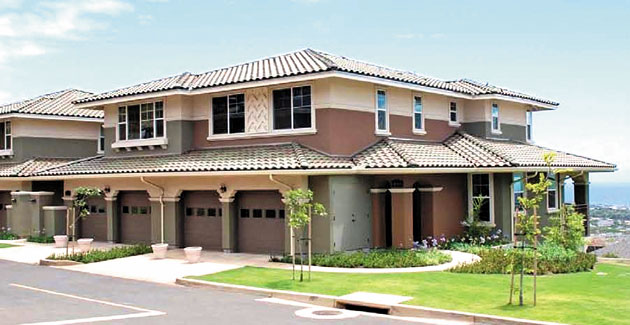Keep your roof in tip-top shape
For many American families, homeownership brings a sense of stability, accomplishment and peace of mind. Owning a home also means being responsible for its upkeep, to ensure a safe, comfortable sanctuary for your family to enjoy. As the winter months approach, the first measure of protection for a home against the rain is the roof.
These tips from roofing manufacturer GAF (www.gaf.com) offer advice to homeowners for how to get your roof ready for the wet winter.
• Start by checking the roof framing structure to make sure it is not compromised. Visually scan the roof for any sagging or uneven areas. If you do see an area that looks uneven, this may mean damage to the roof deck below the shingles.
• Inspect the gutter systems to make sure they are not clogged with branches, leaves or other debris. This is important to ensure that rain water has a way off of the roof. If the water is left standing on the roof, there is an increased likelihood of leaking.

• Make sure gutters are fastened properly and are tight and secure so they don’t cause overflow and build-up or fall off the fascia board. Leaking water can end up causing damage not only to your roof, but also to your interior walls as well.
• Check the valleys of the roof to ensure that they are free and clear of debris that can add weight to the roof and act as a barrier to rain. Leaks frequently occur in valleys, so make sure they are well protected by a proper roofing system.
• One of the most common causes for roofing leaks is problems with flashing — the aluminum or metal material that is used in roof-to-wall transitions over joints to prevent water from seeping in and causing damage. Metal flashing should be used around roof vents, pipes, skylights and chimneys. Remember that flashings can be loosened or torn by high winds and heavy rains, so inspect the areas annually.
• Lastly, you should walk around to carefully inspect the shingles on the roof — look for curling edges, missing granules and certainly for missing shingles or damage from birds, rodents or mongoose.
By inspecting your roof at least twice a year — before and after the winter months — you’ll be able to spot and correct any potential problems before they get severe and cause you to have to replace the entire roof before its expected lifespan. For more information about home safety, visit nahb.org/forconsumers or contact-info@biahawaii.org.
Karen Nakamura is CEO of the Building Industry Association of Hawaii.